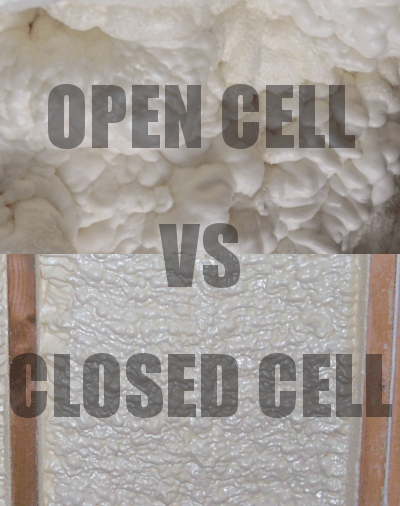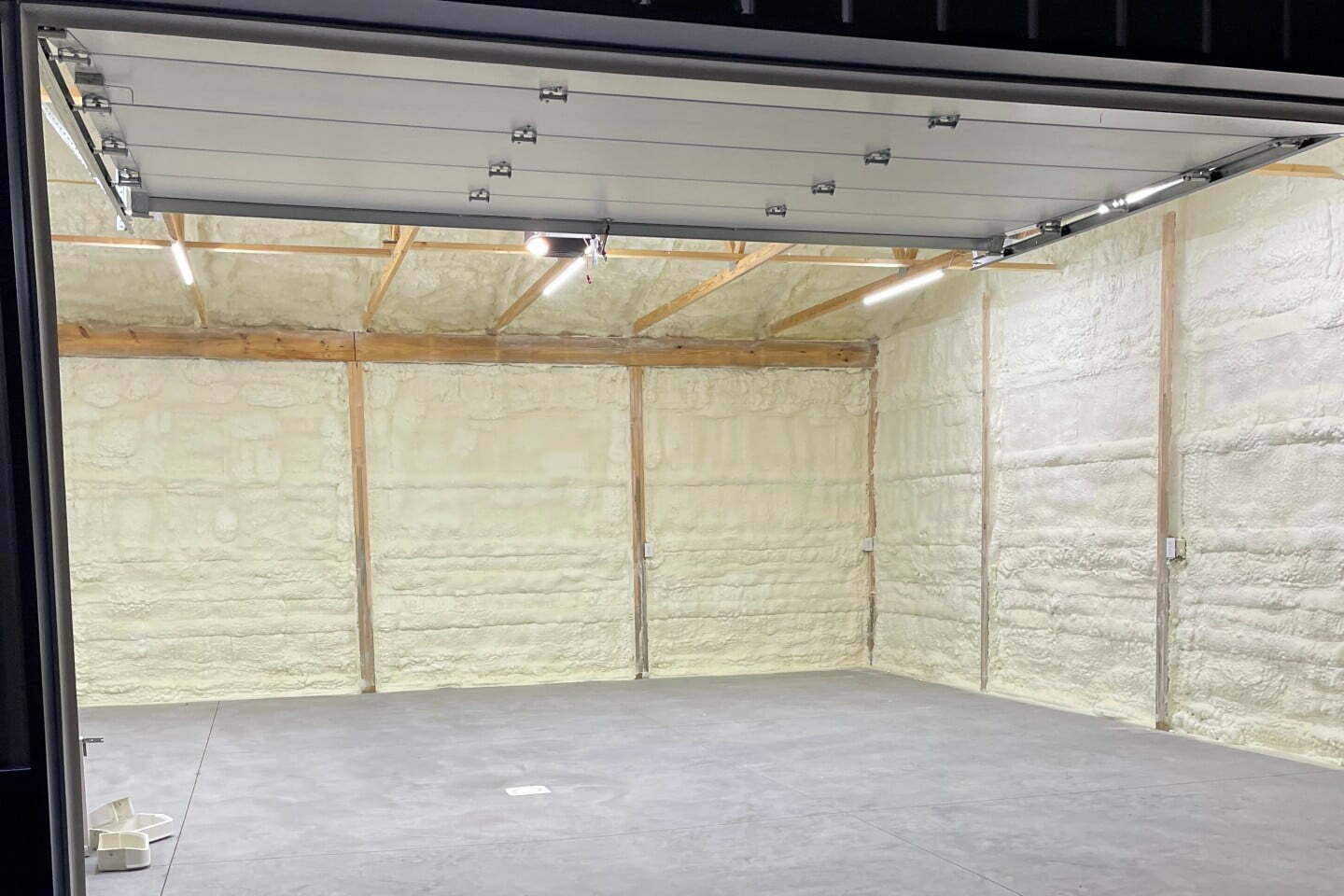Your garage is an essential part of your home, but it often gets overlooked when it comes to insulation and temperature regulation. Most garages are under-insulated, leaving them uncomfortably cold in winter and sweltering hot in summer. This not only makes your garage an unpleasant place to spend time in, but it also wastes huge amounts of energy as heat escapes through the poorly insulated walls and ceiling.
Installing spray foam insulation in your garage can transform the space, providing year-round comfort and drastically reducing your energy bills. Let’s explore the benefits of insulating your garage for improved comfort and energy savings.
What is Spray Foam Insulation?
Spray foam insulation is a pertinent solution to home insulation needs. A garage insulated with spray foam becomes a capable barrier against heat loss during the winter and overheating during the summer, ensuring year-round energy savings.
Insulating your garage, whether it is a prefab detached garage or a closely attached one, can be excellently accomplished using spray foam. This product is a special compound that expands and hardens upon application, providing a rigid foam insulation layer that possesses more insulating properties compared to traditional fiberglass insulation.
The Basics of Spray Foam Insulation
Spray foam insulation involves spraying a liquid latex or polyurethane compound, which swiftly expands into a foam that fills and seals cracks or gaps. The foam can be sprayed directly into wall cavities, on surfaces, or even basement insulation, providing effective air sealing.
There are various types of spray foam, each suited to specific applications. Rigid foam, for example, is thicker and denser, thus making a better moisture barrier. Due to its solid nature, it provides a higher R-value, which refers to the abil
ity of an insulation material to resist heat conduction. This makes rigid foam an excellent option for garage wall insulation.
Comparing Open Cell and Closed Cell Spray Foam Insulation
Two common types of spray foam insulation are open-cell and closed-cell. Open-cell spray foam is softer, more flexible, and less expensive. This type offers excellent energy efficiency but might not be the best choice where a lot of moisture is present. It’s often used for attic insulation or interior walls, providing the added benefit of sound deadening. On the other hand, closed-cell spray foam insulation is harder and more rigid, thus providing a superior moisture barrier. Its higher density and greater R-value make it more suitable for areas such as basements and garages.
How Does Spray Foam Insulation Work?
The working principle of spray foam insulation arises from its expansive nature. Upon application, the foam expands to about 100 times its original volume, filling up any available space. This effectively seals off all air leaks, providing a robust barrier against heat loss, a key building science principle.
Immediately after spraying, the foam hardens into a dense, rigid layer of insulation that remains in place more securely than traditional fiberglass or cellulose. Moreover, it’s resistant to mold and pests, which adds to its longevity. This efficient air sealing coupled with insulating properties directly impacts energy bills – providing significant savings over time.
How Can Spray Foam Insulation Improve Your Garage?
Understanding building science is crucial to recognizing the benefits spray foam insulation offers to your garage’s temperature control, moisture barrier, and energy efficiency. Insulating an unheated garage can be challenging; however, spray foam insulation contractors have mastered this art over time by utilizing cell spray foam insulation technology.
Like a snugly fitted jacket on a cold day, spray foam insulation wraps around every nook and cranny of your garage creating an effective seal. As a result, the external weather conditions have less impact on the internal conditions of your garage. This not only improves the comfort of the space but also results in noticeable energy savings.
Applying spray foam insulation is also a preventive measure against harmful elements, such as mold and mildew. Over time, this approach ultimately preserves the integrity of your structure, safeguarding your investment in your garage. Whether your garage is for your car, your hobbies, or both, spray foam insulation is a proven and reliable method for improving insulation effectiveness.
Benefits of Using Spray Foam Insulation in Garages
You may be asking why you should opt for spray foam insulation garage instead of other insulation types like fiberglass insulation. The answer has many parts. Firstly, when it comes to R-value – the capacity of an insulation material to resist heat flow – spray foam outperforms many traditional insulation materials. Given that the average cost per square foot of spray foam is quite reasonable as compared to its benefits, it is an excellent option for anyone considering garage insulation.
Second, spray foam insulation is fantastic at air sealing. It fills up gaps and holes effectively, preventing drafts and improving comfort. This feature is particularly beneficial if you have an insulated garage door, as it creates a holistic approach to your garage insulation, leaving no gap for inefficiencies.
Lastly, if your garage runs alongside or is attached to your living space, using spray foam for the shared wall insulation drastically reduces thermal bridging, increasing your home’s overall energy efficiency.
The Role of Spray Foam Insulation in Moisture Barrier and Air Sealing
Another significant aspect of spray foam insulation is moisture control. Since an unheated garage is often exposed to varying temperatures, it can become susceptible to dampness, causing wood rot or mold growth. Spray foam insulation acts as a moisture barrier, protecting your garage from potential humidity challenges.
Another important contribution of spray foam insulation is air sealing. It is worth mentioning that energy efficiency in buildings often equates to how tight they are. Using spray foam creates a seal that prevents drafts, contributing to a warmer garage during winter and a cooler one in summer.
Furthermore, spray foam insulation is an ideal choice for basement insulation. It not only prevents air leakage but also keeps the basement dry, addressing two crucial aspects simultaneously.
Energy Savings and Efficiency: Spray Foam vs. Traditional Garage Insulation
One of the standout features of spray foam insulation is its superior energy efficiency compared to other insulation materials. While fiberglass provides good insulation, it does not offer the high-level heat resistance and sealing capacity that spray foam does.
As a result, garages with spray foam insulation tend to require less energy to heat or cool, translating to significant energy savings over time. So, even if the initial cost of spray foam garage insulation might be slightly higher than alternative options, the savings on energy bills make it a more cost-effective option in the long run.
How is Spray Foam Insulation Installed in a Garage?
Typically, the installation process begins with the removal of any old insulation materials. This might involve an insulation removal service if older materials such as fiberglass insulation are present. The garage doors, garage ceiling, garage wall, and even the basement of the house, if attached to the garage, are prepped for the insulation process.
Next, the spray foam insulation contractors spray the spray insulation product, starting from the corners and moving toward the center. It’s crucial that no part of the ceiling or walls is left untouched.
Another critical part of building science to add to this is the curing process. After the spray foam is applied, it needs to dry and cure for a specified amount of time which is usually around 24 hours. During this period, the sprayed surface shouldn’t be disturbed. After this waiting period, your garage will be well-insulated and ready to use.
Note: If the garage already has drywall installed, RetroFoam will be injected into the walls instead of spray foam. Not sure if this should be mentioned in this article or in a separate one.
Labor Cost and Average Cost Per Sq Ft: Budgeting for Your Garage Insulation
The cost of insulating your garage depends on several factors, including the size of the garage, the type of spray foam insulation you choose, and labor cost.
Additionally, insulation contractors typically charge per square foot, so the size of your garage makes a significant difference in the overall cost. For example, a one-car garage might cost less to insulate than a two-car garage.
It’s always a good idea to get a quote from a few different contractors. This will not only give you a sense of what the regular price in your area is but also allow you to adequately budget for the project.
Cincinnati RetroFoam Has the Solution For You
If you’re looking for premium insulation installation, look to Cincinnati RetroFoam. Our impeccable service and workmanship are unmatched in the insulation industry. We provide spray foam, blown-in, and injection foam insulation services. We work on existing homes, new construction, pole barns, and even commercial properties.
When you work with us, you can trust our experienced team to improve your space with insulation services that provide long-term savings. Don’t wait – request your free quote today to get started.
Frequently Asked Questions
Is spray foam insulation good for a garage?
Yes, spray foam insulation can be a great solution for a garage. Spray foam offers increased energy efficiency, noise reduction, and in certain varieties, moisture resistance.
Where should you not use spray foam?
You should not use spray foam near ceiling lights or heating appliances. It’s always advised to work with professional installers for the safe application of spray foam insulation.
Should I spray foam my garage walls?
Spray foam insulation helps keep your garage from getting too cold or hot during extreme seasons. This can result in increased energy savings and can help keep your home’s temperature consistent.


